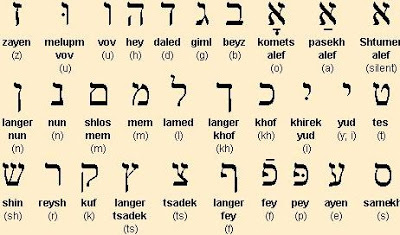“Redst du Yiddish?”
That is Yiddish for, “do you speak Yiddish?” I don’t, actually. I know some useful words and funny sentences. But I can’t make conversation in Yiddish, which was the common language of much of European Jewry until WWII. Yiddish emerged about 1000 years ago as the everyday language of German Jews and later of the large Jewish communities of Eastern Europe. It is basically a Germanic language, closely related to medieval High German, with additions of Hebrew and Slavic words. If you speak German, you can usually understand a conversation in Yiddish, but knowing Hebrew is not enough. However, Yiddish is written with Hebrew letters and read right to left. At its peak, some 11 million people in Europe had Yiddish as their mother-tongue. Mother-tongue is also how one would refer to the language in Yiddish, mamme-loshen. Jews would typically speak the local language outside their community and Yiddish at home, amongst their own. Today, not many people use Yiddish as their first language, although there are still groups of Hassidim, Ultra-Orthodox Jews, who speak and study in Yiddish. Altogether, maybe a few hundred-thousands, worldwide.
In our time Yiddish is a language that is taught at universities, but no longer spoken in the local store. There are still some enthusiasts who maintain an interest in the language, but there is no longer a substantial audience for the once flourishing cultural life in Yiddish. From the late 19th century until the Second World War was the golden age of Yiddish. Books of fiction and fact, daily news-papers, popular songs and theatre pieces were written for thirsty audiences both in Europe and in the US. The last of the great Yiddish writer Isaac Bashevis Singer received a Nobel-prize in 1978. It was my understanding that it was kind of the grand finale for a culture that now has joined the magnificent but no longer relevant dinosaurs.
So why my sudden interest in Yiddish? The other night we did an evening of Yiddish songs and stories in my community, in honor of one of members who is a Yiddishist, and who puts in a lot of hours volunteering for the benefit of all of us. First of all, I was astonished to hear how many of my fellow members speak Yiddish. They are around my age, some of them considerably younger, and they are pretty much fluent. In my childhood in Sweden, most people of my parents’ generation spoke Yiddish. (Mine manage, but it’s not their language). It was a language one used when one didn’t want the kids to understand. Or a language to speak about the past. But rarely something you passed on to your children. In those days, Yiddish was a heavy language, intimately associated with the recent experiences of European Jewry. Yiddish, for the kids of my generation, was a burden. But less so to my friends who grew up in the US or Canada. And less so now than 40 years ago. It is still a nostalgic language but maybe it holds more of a longing for world that time has left behind, rather than the echo of the last words uttered on the way to the gas-chambers.
The associations change with time and place. Yiddish is a language of great charm. It can be juicy, zaftich. It’s a language you speak while gesturing with your hands and emphasizing words with sighs and facial expressions. Think of how olden days’ TV news-anchors used to be very proper and neutral in their appearance. Then think of the exact opposite of that. That would be Yiddish, emotional, funny, subjective and expressive.
Dovid and Moishe, two middle-aged men, are sitting on a park bench
Dovid says “Oy”. Moishe gives him a look and says nothing.
Dovid says “Oy vey”. Moishe gives him another look and says nothing.
Dovid says “Oy veyz mir” and sighs. Moishe gives him a look and says “I thought we agreed not to talk about the children?” It’s even funnier in Yiddish.
Noomi Stahl

